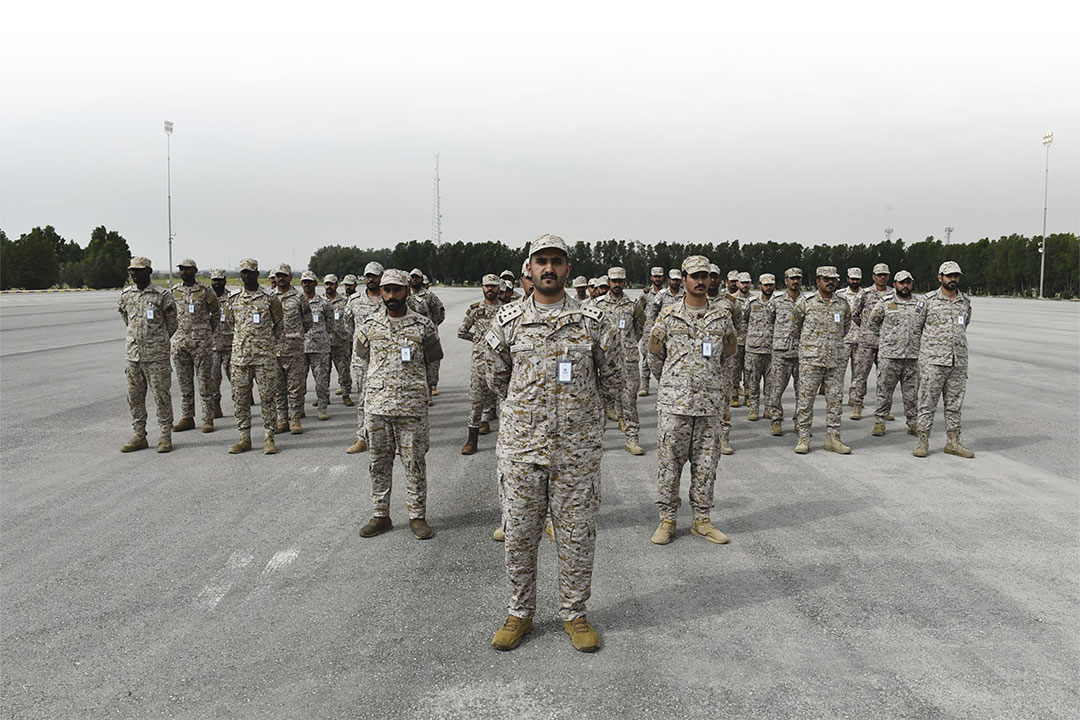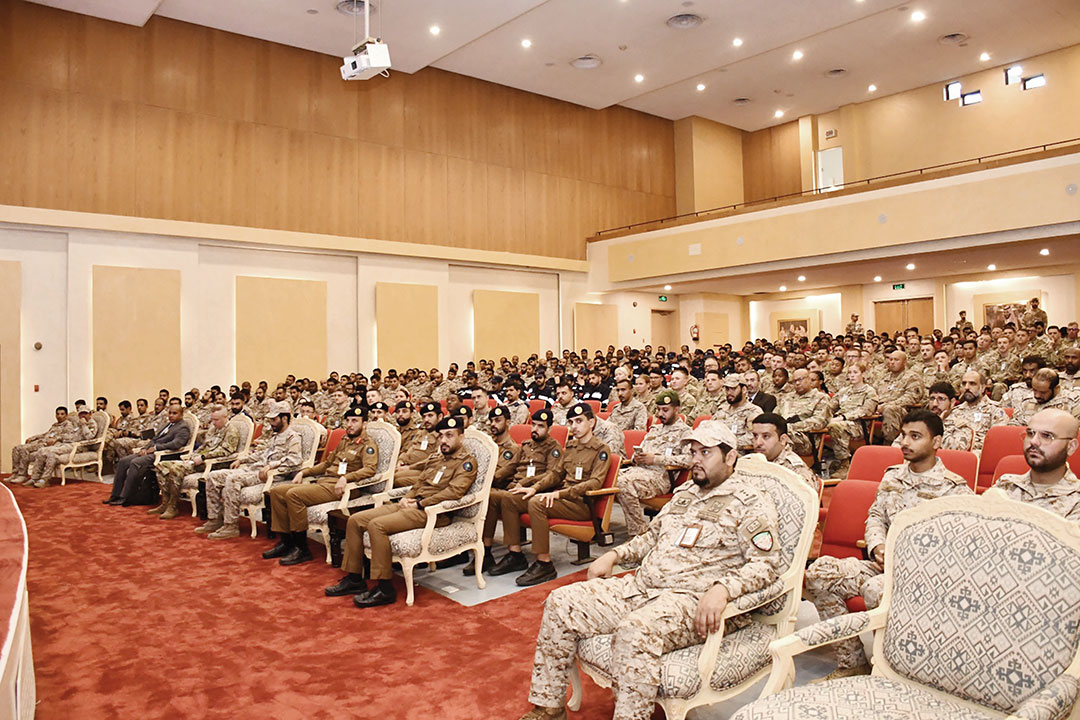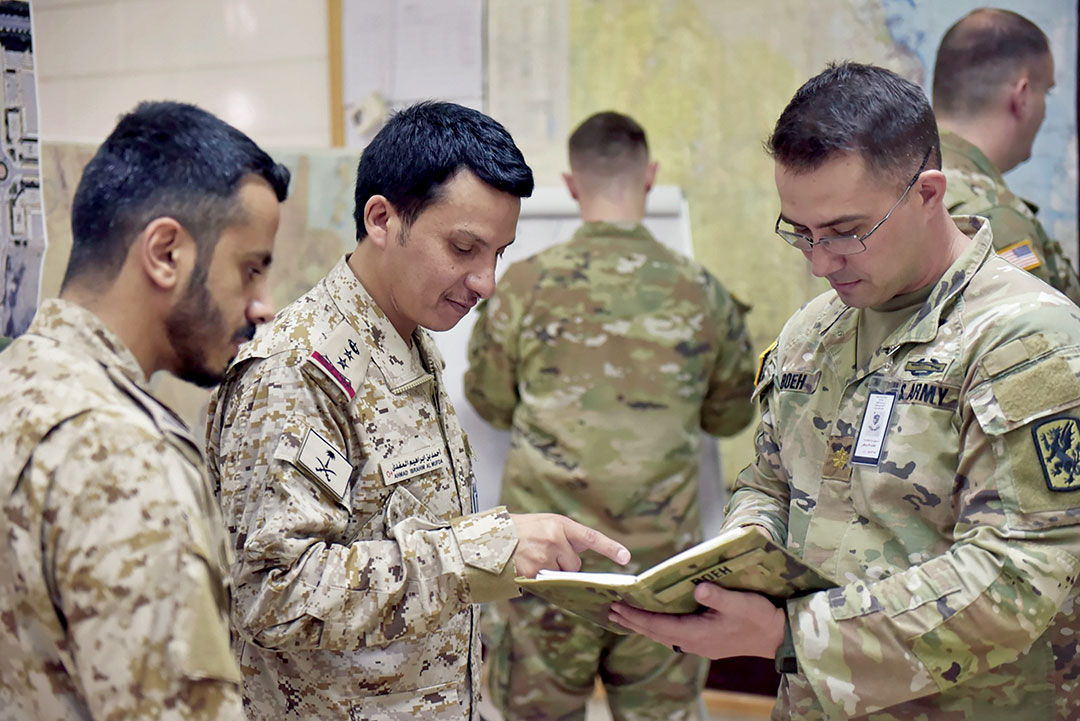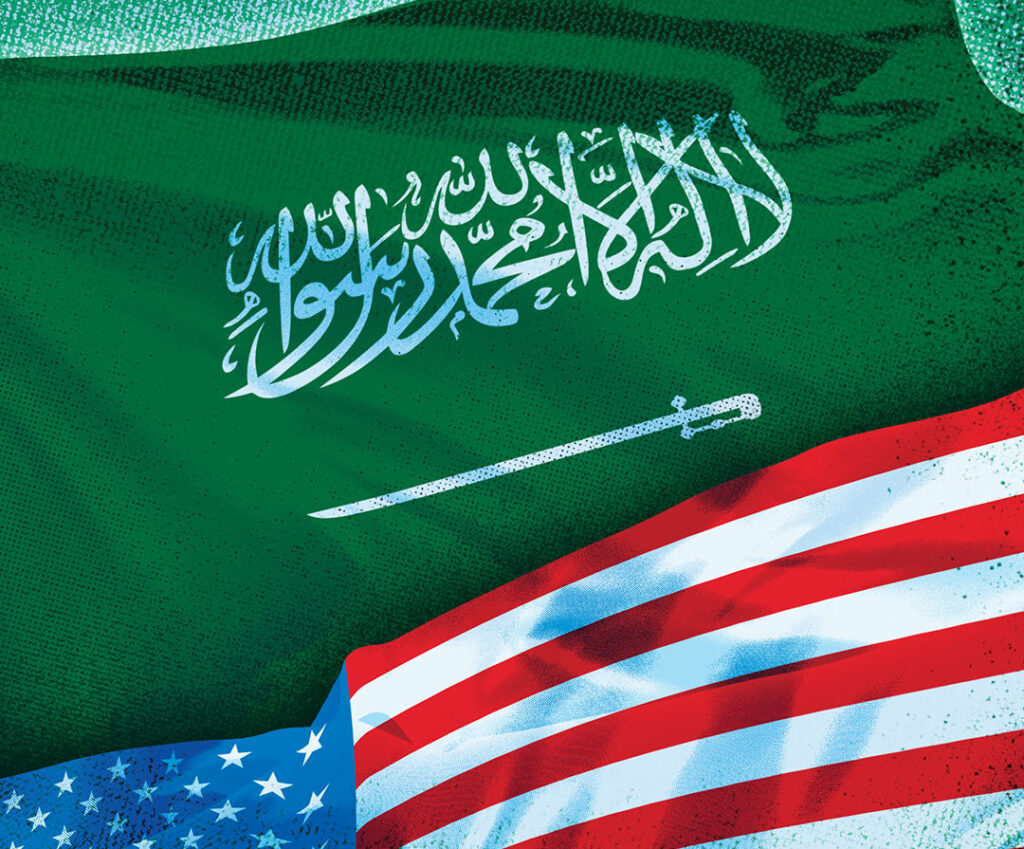UNIPATH STAFF | Photos by SAUDI ARMED FORCES
It’s a chilling scenario: A terrorist organization or malign actor launches aerial drones carrying a deadly payload of chemical weapons targeting not just military installations but also civilian neighborhoods.
To prevent such scenarios involving weapons of mass destruction (WMD), United States Central Command has worked shoulder to shoulder with its allies and partners in the Middle East and Central Asia, culminating in May 2024 with the successful conclusion of the Protection Shield military exercise.
Held at King Fahd Military City in Dammam, Saudi Arabia, military forces and civilian agencies responded as a team to a simulated unmanned aerial vehicle attack to avert destruction and casualties. This fourth iteration of Protection Shield followed intensified training between Saudi and U.S. forces to counter potential chemical, biological, radiological and nuclear (CBRN) attacks.
After months of preparation, Saudi lead planner Brig. Gen. Sami AlOlayan expressed satisfaction that Protection Shield had achieved its goals.

“The Protection Shield 4 exercise included holding several seminars and theoretical lectures on protection against WMDs, training commanders and staff managing this type of crisis, managing operations centers, and holding joint workshops, in addition to implementing a number of field training exercises on how to manage and prevent crises resulting from WMDs,” Brig. Gen. Sami said.
Over 200 exercise participants from multiple organizations trained in a real-world threat environment, demonstrating their readiness to respond as a team to regional threats.
It involved the Royal Saudi Land Forces, Air Defense and Civil Defense Units; U.S. Army Central’s Task Force Spartan; the U.S. Air Force’s Emergency Management, Explosive Ordnance Disposal and medical units; and the Saudi Red Crescent, Ministry of Health and other civilian organizations working side by side toward a common goal.
Addressing senior leaders attending the Distinguished Visitor Day at Protection Shield, Brig. Gen. Joseph Sharkey, deputy division commander of the U.S. Army’s Task Force Spartan, praised Protection Shield for its ability to build and maintain relationships.
“Approximately 66 U.S. service members participated alongside the Royal Saudi armed forces in this bilateral, combined inter-ministerial exercise,” Brig. Gen. Sharkey said. “Our goal is to enhance security cooperation and promote interoperability against CBRN threats through the full range of military operations and support from ministries and related governmental agencies.”
The exercise also evaluated the effectiveness of how Saudi and U.S. forces and agencies shared information and reports and developed joint field response protocols.
The climax of the exercise involved an unmanned aircraft system (UAS) breaching Saudi territory to simulate a chemical warfare attack with a potential for creating mass casualties. Friendly forces, linked to a command center staffed by Saudi and U.S. troops, detected the threat and directed operations to neutralize it. Ground forces and civilian agencies began decontamination procedures to ensure air, soil, vehicles and personnel were free of toxic chemicals.

Joint exercises play a crucial role in training forces to confront weapons of mass destruction, which include chemical, biological, radiological and nuclear weapons, Brig. Gen. Sami said.
Military forces and government agencies work together to enhance readiness, coordination and response to prevent, deter or mitigate the use of weapons of mass destruction.
“Exercises like these build efficiency and readiness and enlist technology to confront weapons of mass destruction that require specialized vehicles that can identify chemical agents, clear affected areas, and safely deal with hazardous materials,” Brig. Gen. Sami said.
“Joint exercises provide practical experience in using the latest detection technologies and protective equipment, reducing response times and errors during real crises. Joint exercises enhance trust and information sharing, which is critical to managing WMD crises.”

Brig. Gen. Sharkey reiterated that Protection Shield enables countries of the region to address WMD challenges collectively in the name of security and stability.
“U.S. service members are delighted and honored to work with their Saudi counterparts,” he said. “This exercise is an important professional development tool to test and validate CBRN defense concepts, procedures and tactics. More broadly, it enables militaries to grow capabilities and prepare to quickly respond to demanding crisis situations.”

